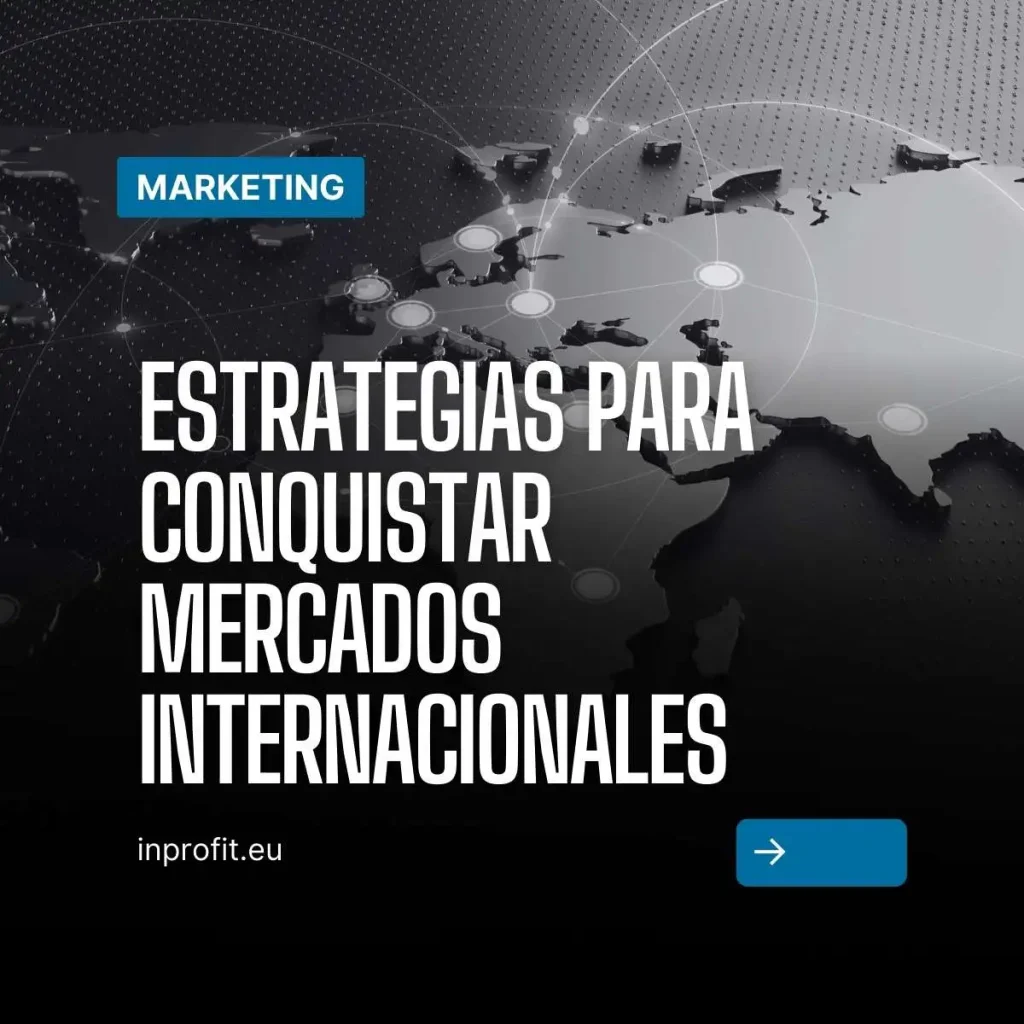Expanding into international markets no longer requires physical offices or large logistical investments. Digitalization has democratized access to global audiences, allowing companies to connect with customers in any corner of the world from a single screen. However, success in this journey depends on a well-thought-out strategy that combines relevant content, agile technology and regulatory compliance.
Companies that master this art not only gain visibility, but build authentic connections with diverse audiences, transforming clicks into lasting relationships.
Why is digital internationalization key?
Imagine your business as an explorer sailing uncharted seas. Each market is an island with its own culture, language and rules. Digital tools act as your compass, guiding you to reach port without getting shipwrecked. From creating content that resonates globally to optimizing advertising campaigns, this post shows you how to conquer international markets with precision and creativity.
Evergreen content that transcends borders
Content is at the heart of any digital internationalization strategy, but not just any content will do. To conquer global markets, you need stories that are not only timeless, but that also adapt to the cultural nuances of each region. This is where evergreen content comes in, designed to stay relevant over time, combined with multilingual management that makes every word resonate locally.
Platforms like Contentful simplify this process by centralizing the creation and distribution of multilingual content. With this tool, you can structure an article on “how to choose sustainable products” and adapt it to different languages without losing its essence. For example, the same article can highlight sustainability in Europe, where the topic is a priority, or focus on convenience in emerging markets where price is key. Contentful allows you to manage translations, tones and formats, ensuring that content is culturally relevant and optimized for local keywords, such as “international digital marketing” or “global expansion strategies”.
In addition, evergreen content should be structured with a single clear H1, H2 and H3 subheadings that guide the reader, and naturally integrated long-tail keywords. Incorporating structured data, such as schema markup for articles, ensures that Google displays rich snippets, such as FAQs or summaries, increasing visibility in the SERPs. This approach not only attracts organic traffic, but also builds a solid foundation for your domain authority in multiple regions.
Advertising that speaks the local language: Localized digital campaigns
Digital advertising is the megaphone that amplifies your presence in international markets, but the message must feel like a personalized whisper in the language and culture of each audience. Platforms like Google Ads and Meta Ads offer advanced tools to target geographically and optimize budgets, especially in emerging markets where ROI can be high with a modest investment.
Setting up a localized campaign starts with understanding local search intent. For example, in Google Ads, you can use keywords like “buy sustainable clothing in Mexico” or “technology services in Germany” to align your ads with local searches. Geographic targeting allows you to show ads only to users in specific regions, while ad extensions, such as links to local pages or regional phone numbers, increase relevance. In Meta Ads, you can customize ads based on cultural interests, such as local holidays or consumer trends, ensuring that the message connects emotionally.
The key to maximizing ROI is constant optimization. Tools like Google Ads Keyword Planner or Meta Ad Manager provide real-time data on performance, allowing you to adjust budgets and messages to prioritize markets with higher potential. For example, if a campaign in Brazil generates more clicks than in Argentina, you can automatically redistribute the budget. This approach not only saves resources, but also strengthens your positioning by generating relevant traffic that Google values.
Technological infrastructure as a strategic partner
A slow or inaccessible website is like a ship that sinks before it sets sail. To conquer international markets, your digital infrastructure must be fast, secure and accessible in any region. Cloud solutions, such as AWS or Google Cloud, are the engine that drives this journey, ensuring that your website or application is a beacon of reliability for global audiences.
AWS, for example, offers a content delivery network (CDN) through CloudFront, which stores copies of your site on local servers around the world. This reduces latency, ensuring that a user in Japan loads your page as fast as one in Spain. Google Cloud, on the other hand, optimizes scalability, allowing your site to handle traffic spikes during global launches or campaigns. Both platforms comply with Google’s Core Web Vitals, such as Largest Contentful Paint (LCP) and Cumulative Layout Shift (CLS), critical factors for SEO.
In addition, the cloud infrastructure facilitates integration with analytics tools, such as Google Analytics 4, to track user behavior by region. This allows you to identify which markets respond best to your content and adjust your strategy accordingly. A solid infrastructure not only improves the user experience, but also sends positive signals to Google, raising your ranking in the SERPs.
Complying with the rules of the game, legal
Expanding internationally means navigating a maze of digital regulations, from GDPR in Europe to CCPA in California. Ignoring these regulations can result in costly penalties and damage customer trust. That’s why regulatory compliance is a key part of any digital internationalization strategy.
Tools such as OneTrust simplify this process by managing user consent in an automated way. For example, OneTrust allows you to display cookie banners tailored to local laws, ensuring that users in Europe explicitly agree to the use of data, while in other regions the requirements may be less stringent. This tool also generates compliance reports, facilitating audits and protecting your brand from legal risks.
In addition, compliance reinforces consumer confidence. A site that respects privacy and clearly communicates its policies is more likely to convert visitors into customers. From an SEO standpoint, pages with clear and accessible privacy policies tend to receive a better evaluation from Google, as they reflect a trustworthy user experience. Integrating these practices not only avoids legal issues, but also strengthens your digital authority in global markets.
The creative touch: Unique strategies to shine globally
To stand out in international markets, you need more than technology; you need ideas that break the mold. Here are some innovative strategies to differentiate yourself:
Interwoven cultural narratives
Instead of translating content literally, use tools like Contentful to create narratives that combine universal values with local nuances. For example, a sustainability campaign can highlight technological innovation in Germany and connection to nature in Brazil, while maintaining a consistent core message.
Dynamic ads with AI
Platforms such as Google Ads allow you to create dynamic ads that automatically adapt to language and user preferences. For example, a clothing ad can display winter products in Canada and light clothing in Mexico, optimizing engagement without manual intervention.
Local immersive experiences
Incorporate interactive elements, such as quizzes or personalized videos, using tools such as Typeform or Wistia. For example, a quiz that helps users discover products based on their local needs can increase time on site and improve SEO.

How does internationalization strengthen your digital presence?
Beyond visible campaigns, digital internationalization strategies work in the background to consolidate your online authority. Strategic interlinking, such as linking a post on “global expansion strategies” to a multilingual services page, distributes SEO value and improves user navigation. In addition, the use of hreflang tags ensures that Google displays the correct version of your site based on the user’s language and region, increasing local relevance.
Tools like Google Tag Manager allow you to track interactions by region, providing data to optimize campaigns in real time. This approach not only attracts organic traffic, but also creates a network of content that retains visitors, sending positive signals to Google about the quality of your site.
Your screen, your gateway to the world
Digital internationalization is more than a strategy; it is a passport to take your brand to every corner of the planet. With globalized content, localized advertising, a solid technological infrastructure and regulatory compliance, any company can conquer international markets from its screen.
The tools and strategies shared in this post give you the map to navigate this journey, transforming digital opportunities into global connections.
Ready to set sail? The world is just a click away.




